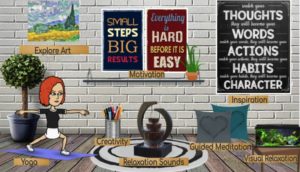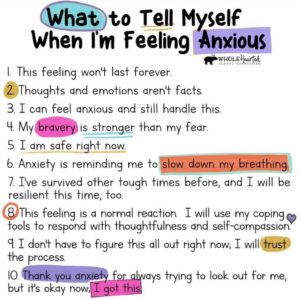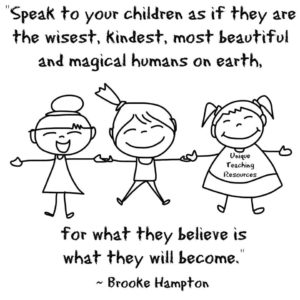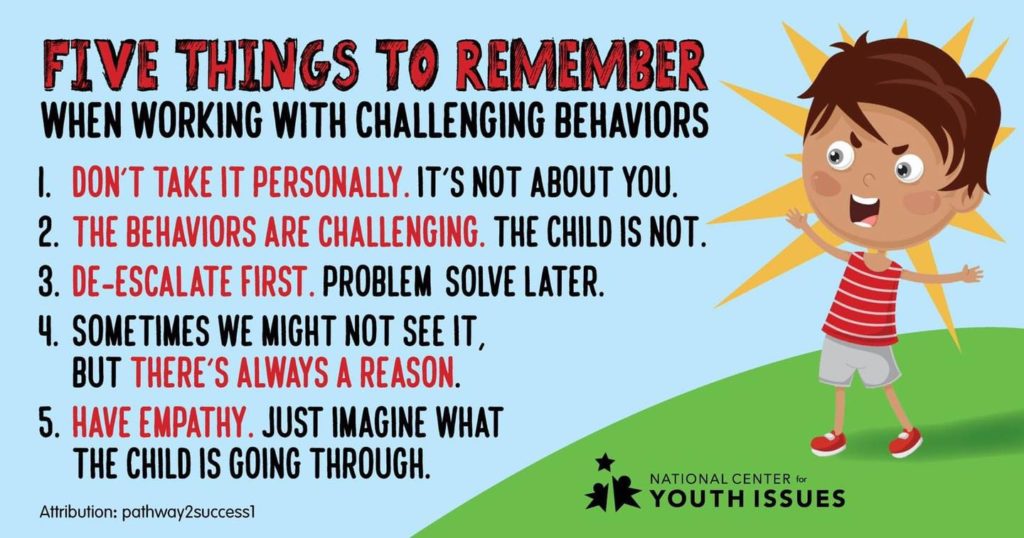Uncategorized
Is it Rude, is it Mean, or is it Bullying?
0October is National Bullying Prevention Month. In hopes for more civility and decency nationwide, among  people of ALL ages, I’ll be sharing some key articles, strategies and insights. Please read and share with those who work and live with school-aged kids!
people of ALL ages, I’ll be sharing some key articles, strategies and insights. Please read and share with those who work and live with school-aged kids!
Is it Rude, is it Mean, or is it Bullying?
A few weeks ago, I had the terrific fortune of getting to present some of the bullying prevention work that I do to a group of children at a local bookstore. As if interacting with smiling, exuberant young people was not gift enough, a reporter also attended the event a wrote a lovely article about my book and the work I do with kids, parents, educators, and youth care professionals. All in all, it was dream publicity and since then, has sparked many conversations with people in my town who saw my photo in the newspaper and immediately related to the examples of bullying that were discussed.
I have been brought to tears more than once since the article ran, while listening to parents share their feelings of outrage and helplessness over their kids’ experiences with bullying in school. One gifted but socially awkward middle school student blew me away with his articulate, poised, yet searingly painful accounts of relentless physical and verbal bullying on his school bus. An elementary school-aged girl described how she had to learn to shed her Australian accent within a month of entering U.S. schools because of how she was shunned by her classmates. The commonness of it all routinely astounds me with every new account; the pervasive cruelty makes my jaw drop every time.
It is important for me to begin this article by establishing that without doubt, many of the stories of bullying that are shared with me are horrifying and some are unspeakably cruel. But now, I also want to be honest and share that some of the stories are…well…really not so bad.
Take this story recently shared with me by an acquaintance who read about my professional work:
“Signe, I saw your picture in the paper last week. Congratulations! I didn’t know you worked with bullied students. It’s so important that you do—things have gotten so bad! Last week, my daughter was bullied really badly after school! She was getting off of her bus when this kid from our neighborhood threw a fist-full of leaves right in her face! When she got home, she still had leaves in the hood of her coat. It’s just awful! I don’t know what to do about these bullies.”
“Was she very upset when she got home?” I empathized.
“No. She just brushed the leaves off and told me they were having fun together,” she said.
“Oh,” I answered knowingly, aware that oftentimes kids try to downplay victimization by bullies from their parents, due to the embarrassment and shame they feel. “Did you get the sense she was covering for the boy?”
“No, no. She really seemed to think it was fun. She said that she threw leaves back at him, which I told her never to do again! The nerve of those kids.”
“Those ‘kids,’” I clarified. “Was it just the one boy throwing leaves or were there a bunch of kids all ganging up on her?”
“No, it was just this one boy that lives about a block from us,” she assured me.
“Is he usually mean to her? Has he bothered her after school before?” I asked, eager at this point to figure out what the bullying issue was.
“No. I don’t think so at least. That was the first time she ever said anything about him. It was definitely the first time that I noticed the leaves all over her coat. But it better be the last time! I won’t stand for her being bullied by that kid. Next time, I am going to make sure the Principal knows what is going on after school lets out!”
While I always want to be careful not to minimize anyone’s experience (it’s the social worker in me!) and a part of me suspects that the sharing of this particular story may have been simply this parent’s spontaneous way of making conversation with me in a store aisle, I hear these “alarming” (read: benign) stories often enough to conclude that there is a real need to draw a distinction between behavior that is rude, behavior that is mean, and behavior that is characteristic of bullying. I first heard bestselling children’s author, Trudy Ludwig, talk about these distinguishing terms and, finding them so helpful, have gone on to use them as follows.
Rude = Inadvertently saying or doing something that hurts someone else.
A particular relative of mine (whose name it would be rude of me to mention) often looks my curly red hair up and down before inquiring in a sweet tone, “Have you ever thought about coloring your hair?” or, “I think you look so much more sophisticated when you straighten your hair, Signe.” This doting family member thinks she is helping me. The rest of the people in the room cringe at her boldness and I am left to wonder if being a brunette would suit me. Her comments can sting, but remembering that they come from a place of love—in her mind—helps me to remember what to do with the advice.
From kids, rudeness might look more like burping in someone’s face, jumping ahead in line, bragging about achieving the highest grade, or even throwing a crushed up pile of leaves in someone’s face. On their own, any of these behaviors could appear as elements of bullying, but when looked at in context, incidents of rudeness are usually spontaneous, unplanned inconsideration, based on thoughtlessness, poor manners, or narcissism, but not meant to actually hurt someone.
The remainder of this post is available on Psychology Today. Click below for the direct link or cut and paste the following one in your browser: https://www.psychologytoday.com/us/blog/passive-aggressive-diaries/201211/is-it-rude-is-it-mean-or-is-it-bullying
Is it Rude, Is it Mean or Is it Bullying?
Help Your Daughter Cope with Bullying
0October is National Bullying Prevention Month. In hopes for more civility and decency nationwide, among people of ALL ages, I’ll be sharing some key articles, strategies and insights. Please read and share with those who work and live with school-aged kids!
of ALL ages, I’ll be sharing some key articles, strategies and insights. Please read and share with those who work and live with school-aged kids!
Helping Girls Cope with Bullying & Frenemies
The world of little girls begins as such a lovely place. Heart and rainbow doodles adorn notebook covers, best friendships are formed within seconds, and bold, exuberant voices carry squeals of carefree laughter and brazen delight. Happiness is worn on a sleeve, and anger is voiced with authentic candor.
Length-of-stay in this accepting, kindly world is time-limited for many girls, however. Seemingly overnight, sweet sentiments like, “I love your dress,” turn into thinly-veiled criticisms such as, “Why are you wearing that dress?” Yesterday’s celebratory birthday party becomes today’s tool of exclusion, as guest lists are used to enforce social hierarchies. Long before most school programs begin anti-bullying campaigns, young girls get a full education in social aggression.
What can adults do to help kids cope with inevitable experiences of friendship conflict and bullying?
To Intervene or Not to Intervene?
Adults often struggle with the question of, “Should I intervene in a child’s friendship problems?” The line between helicopter and hands-off can get confusing, as adults waver between wanting to protect young people from the pain of broken friendships and believing that bullying is an inevitable rite of passage. The bottom line is this; no child should have to find her way through painful conflict alone. Kids need adult support and insights when it comes to navigating the choppy waters of friendship, disguised as a weapon. Here are some fundamental ways parents can help:
Teach Her to Know It When She Experiences It
One of the things that makes relational bullying so insidious is its under-the-radar nature. It is things left unsaid and invitations not given. It is unexplained cut-offs in friendship. It is silence. This type of bullying is marked by crimes of omission that make it very hard for girls to put their finger on what they are experiencing in their friendships—yet the pain, humiliation, and isolation are unmistakable.
Adults play a critical role in keeping an open dialogue with young people and making them aware of the typical behaviors that mark this cruel form of social aggression. Knowledge is power; when girls know what relational bullying looks and feels like, they are better able to make a conscious choice to move away from friends who use these behaviors.
The remainder of this post is available on Psychology Today. Click below for the direct link or cut and paste the following one in your browser: https://www.psychologytoday.com/us/blog/passive-aggressive-diaries/201501/helping-girls-cope-bullying-and-frenemies
Helping Girls Cope with Bullying & Frenemies
Why October is the Busy Season for Bullying in Schools
0October is National Bullying Prevention Month. In hopes for more civility and decency nationwide, among people  of ALL ages, I’ll be sharing some key articles, strategies and insights. Please read and share with those who work and live with school-aged kids!
of ALL ages, I’ll be sharing some key articles, strategies and insights. Please read and share with those who work and live with school-aged kids!
Late August and September are the honeymoon season in many schools across the United States; the time of year when students are exploring new friendships, feeling out the shifting social hierarchies of their grade, and determining where they fit in. As a school counselor, I have learned to anticipate that there will be a few rough patches in the early weeks of school as relationships re-shuffle from the previous year, but for the most part, the friendship waters will be steady. Then, there’s October.
It’s no coincidence that National Bullying Prevention month falls at that time of year when select school-aged kids have sized each other up, calculated their relative social power, and begun to stake out their new place in the peer pecking order. In this game of social whack-a-mole where young people put each other down in order to boost themselves up, bullying is often the strategy of choice to “win” the popularity wars. Teaching young people how to recognize bullying in all of its shapes, forms, practices, and methods is the necessary first step to equipping them to manage the highs and lows of their school social scene.
These four categories are a helpful framework to teach young people about purposeful and patterned abuses of social power that tend to peak in schools in the autumn months:
Physical bullying: The traditional “sticks and stones” of aggression, this kind of bullying includes a range of antagonistic behaviors in which one person aims to cause bodily harm to another person.
The remainder of this post is available on Psychology Today. Click below for the direct link or cut and paste the following one in your browser: https://www.psychologytoday.com/us/blog/passive-aggressive-diaries/201710/why-october-is-the-busy-season-bullying#_=_
Why October is the Busy Season for Bullying Prevention
Helping Students Develop Executive Skills for Online Learning
0For some young people, knowing how to organize materials, plan a work schedule and manage their time comes as naturally as breathing. For others, these skills can be acquired with simple coaching and/or modeling from helping adults. For young people diagnosed with ADHD or other challenges that impact the development of executive functioning skills, learning how to organize, plan, filter distractions, sustain attention, meet deadlines, regulate impulses, and all of the other skills needed to do well academically–and stand a chance at navigating distance learning–do not come naturally but rather require intensive, focused teaching.
This post, written by Sarah Gonser for Edutopia, provides a great list of the skills and strategies students need to develop and master the skills they need for learning.
Original link: https://www.edutopia.org/article/how-help-middle-school-students-develop-crucial-skills-year

Self-Care and Relaxation Resource
0I have been the beneficiary of the ideas of a lot of creative, talented professionals in School Counselor groups this Summer. As we all move in to what we know will be a challenging year, I am grateful for the spirit of collaboration in sharing materials.
Here is a virtual Faculty Relaxation Room I created–with the help and models of many others. The image is below; please click on the link above to access the actual room online and to be able to click the links to explore the resources! I hope you enjoy!

Back to School Resources for Parents & Caregivers
0
As parents, caregivers, and people who care deeply about the well-being of young people, we are connected in our  efforts to make the best possible decisions for kids as the 2020-21 school year resumes this Fall. While it is clear that there is no one-size-fits-all pathway and that what works well for one family or community may not work at all for another, my hope is that in these days and weeks, we will give each other a lot of grace and support and maintain the positive assumption that we are all doing the best we can with the information and resources that we have.
efforts to make the best possible decisions for kids as the 2020-21 school year resumes this Fall. While it is clear that there is no one-size-fits-all pathway and that what works well for one family or community may not work at all for another, my hope is that in these days and weeks, we will give each other a lot of grace and support and maintain the positive assumption that we are all doing the best we can with the information and resources that we have.
.
In the space that follows, I am sharing my own personal, curated collection of videos, posts and resources that I have found most helpful when it comes to thinking through safeguarding kids’ emotional, social, and mental health as they return to school in September.
.
RECOMMENDED VIDEOS:
Pediatrician gives advice about sending kids back to school in viral video
Spoiler Alert: “The decision that you make about school is the right decision. That’s it. Each decision is imperfect….How you choose to think about the decision that you make will make it right.”
Classroom Job Assignments for this School Year
As you’ll see as soon as you open this link, this video was made to get a laugh…but as with most good humor, it’s funny because of the grains of truth it contains. Please have a laugh at the video, then read my more serious request below:
https://www.facebook.com/gerrybrooksprin/videos/612243813027724/UzpfSTYxNzM1NjU4ODoxMDE1NzUwOTQ3MzQzMTU4OQ/
A looming concern for me is how to extend the culture of kindness that Swain works so hard to create amidst the inevitable anxiety and apprehension that many students will carry in with them upon their return to classrooms and peer groups. While it would be understandable for a well-meaning young person to back away in fear from a classmate who sneezes, to loudly point out someone who forgets to put their mask back on after a meal, or to spread the news that “So-and-So” got sent home this morning because he had a fever,” these fear-based behaviors will be perceived as hurtful and will create a school climate of isolation and fear, when what we all are working so hard for is to create conditions of safety and inclusion. We also want to make sure that students don’t repeat concerns they may have heard caregivers discuss, such as “So-and-so’s parent works in a hospital so they might have the virus” or even “He/she traveled to [country/state with a high incidence of COVID-19] so we shouldn’t play with him/her.”
I ask all parents & caregivers to have loving conversations with your child(ren) prior to their return to school in which you plan for how to keep themselves safe (social distancing, wearing masks, etc) while simultaneously expressing concern and compassion–rather than fear or even contempt–for others.
With forethought and practice, I know we can help kids get their wording right. As faculty, we will be using consistent positive & nurturing language to remind students how to care for each other upon the return to school.
.
PRACTICING MINDFULNESS
The Power of One Breath (by GoZen)
This is such an uncertain time in all of our lives, filled with worries, anxieties, and concerns about health, safety, security and well-being. Now, more than ever, being able to manage stressful thoughts and control uncomfortable feelings is key for adults and kids alike. During the school year, social-emotional skills such as mindfulness, stress management, problem-solving, and maintaining a positive mindset are taught and practiced regularly. Skills like mindful breathing–the most efficient and effective method for calming an anxious, agitated brain–are easy to practice at home. Studies are clear that the more mindful breathing is practiced, the more effective it is for calming worries and helping people feel emotionally regulated. I highly recommend free apps like Calm and Insight Timer and love these videos (listed above) for kids.
.
RECOMMENDED POSTS:
Answers to FAQ’s About Anxiety in Children and Adolescents
RECOMMENDED READ-A-LOUDS
A Little SPOT Stays Home: A Story About Viruses And Safe Distancing
The Classroom and the Quarantine: A Story About Coronavirus for Children
CHECK BACK
Answers to FAQ’s About Anxiety in Children & Adolescents
0As a School Counselor, one of the most common topics I am consulted on by teachers, administrators, and parents is anxiety. Anxiety disorders are the most common and pervasive mental disorder affecting children and adults in the United States. According to the Anxiety and Depression Association of America, anxiety impacts 1 in every 8 children. With rates this high, it’s important for any adult living or working with young people to have a basic understanding of this health issue.
In this post on Psychology Today, you’ll find my responses to eight of the questions I am most frequently asked about anxiety in young people:
https://www.psychologytoday.com/us/blog/passive-aggressive-diaries/201807/answers-faqs-about-anxiety-in-children-and-adolescents

https://www.psychologytoday.com/us/blog/passive-aggressive-diaries/201807/answers-faqs-about-anxiety-in-children-and-adolescents
Is She Lying? Or Is It Truth to Her? The Role of Perception in Conflict
0In this excerpt from my book, Parenting the Challenging Child, I share a real-life example of a mother-daughter  conflict based on their differences in perceiving a stressful event. You are invited to “listen in” on their conversation and see how the mother turned the conflict into a relationship-building opportunity.
conflict based on their differences in perceiving a stressful event. You are invited to “listen in” on their conversation and see how the mother turned the conflict into a relationship-building opportunity.
Is She Lying? Or Does She Really Believe What She is Saying?
Original link: https://www.psychologytoday.com/us/blog/passive-aggressive-diaries/201909/is-she-lying-or-does-she-really-believe-what-she-is-saying

